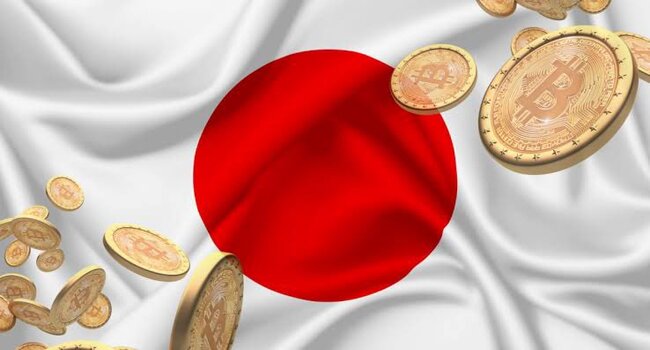UN missions attend “Threads of Tradition” a Immersive interactive event about Tajikistan in New York, May 2025
Melik Kaylan
Readers of this column know that Central Asia has been a particular focus in recent years. The region took on added importance with the end of the Afghan war freeing up the direction neighboring countries might take into the future. Strategically, economically and culturally it matters which way the ‘Stans go because of the effect on the rest of the world, especially on nearby powers like Russia, China and India. To that end, columns were devoted to the pan-Turkic cultural/political harmonization of countries from Turkey and Azerbaijan through Turkmenistan to Kyrgyzstan. As a trading bloc, if fully successful, they would constitute a new counter-balance to the superpowers of the neighborhood.
What seldom gets mentioned in such geo-political evaluations is Tajikistan which doesn’t fit into any obvious alignments or predictable paths. This column is about that country and its prospects. First off, the Tajiks don’t align with the pan-Turkic picture because their language and predominant culture descends from the Perso-Iranian side of Silk Road history. The broader region has swung between Turco-Mongol and Persian empires back and forth across the centuries until Moscow established sway through the 1800s. Then the Soviets, as with many empires, dispensed borders according to their own arbitrary needs and so ethnic populations got caught in other republics, leaving the region prone to post-Soviet unrest. Tajikistan borders Afghanistan for close to 850 miles; not surprisingly, radical Islamist violence has been a recurrent feature. This, coming after the harsh Stalinist years and the forcible conscriptions of World War ll, means long memories of suffering have shaped the country’s psychology.
But it didn’t stop there. Soon after 1991 and declaring post-Soviet independence, Tajikistan plunged into a five year civil war (1992 – 97), broadly speaking, between Islamist and secular-nationalist factions. Throughout the 2010’s Islamic militants sparked bloody incidents. During the Afghan war years which ended in 2021, French troops were stationed in the country and Russia still has a military base near the capital Dushanbe. Then in 2022 a fierce border conflict erupted along the Kyrgyz frontier. Rather impressively, intense diplomatic initiatives between the two sides led to a quick resolution of the conflict and, indeed, to a long-term entente that produced a signed intergovernmental treaty on border limitations and demarcations.
This is all by way of saying that it’s no wonder stability and order beat all other concerns in the minds of Tajiks and at the highest levels of government. Yes, the same man, President Emamoli Rahmon, has governed the country since 1992. Yes it’s true that Islamic style long beards are outlawed. Any number of bien-pensant criticisms abound concerning the country’s politics and speech laws. But nestled between Afghanistan and China, and carrying long and fresh memories of turmoil, it’s not clear how Tajikistan could easily emulate western norms of civil society without risk of instability, at least for now.
We should keep in mind that one of Asia’s most successful states, Singapore, essentially sacrificed political life for economic success for some decades. Much to the shock of the West, it has become a kind of alternate model of evolution known as ‘the Singapore model’ in which stability through affluence delivers the kind of unity which then allows for political freedoms. We also shouldn’t forget that other models of success such as South Korea and Taiwan went through decades of alternation between turmoil and discipline before arriving at a balance. Having said that, it’s interesting to note the Tajik variant has a somewhat different priority of emphasizing identity, history and culture as the first stage toward unity. To that end, they have chosen as their root identity a historical tradition that emphasizes pre-Iran Persian traditions beginning with the Sarazmians in the 4th millennium BCE, the first identifiable indigenous group of the Tajik territory. From there, the Tajik identity traces through Sogdians and Samanids to their cultural models of Ferdawsi, Ibn Sina (Avicenna), Omar Khayyam, and Rumi.
What you’ll note about these names is that they trace a heritage of mild and secular Islam blended with poetry, mysticism and science sourced in Central Asia – in contradistinction from the primarily religious identities of such states as Afghanistan, Iran and Saudi Arabia. Ferdawsi wrote the epic poem titled The Shahnameh as a way of preserving pre-Islamic Persian myths and culture at the height of Arabic Islam’s power over what is now Iran. Rumi you all know for his Sufi mystical poetry. Omar Khayyam, a scientist, astronomer, and mathematician, earned fame as a kind of religious skeptic and wit in his celebrated poetry. Avicenna became known in the west for his pivotal medieval contributions in philosophy and medicine. They all have in common a liberality of thought not rooted in religion – a wise pathway for a country wishing to avoid the waves of volatility and violence that have swept the region in the name of religious doctrines.
A celebrated medieval figure from Tajik History in view during “Threads of Tradition”, in New York, May 2025
Melik Kaylan
A powerful illustration of the Tajik vision was unfurled in New York City on May 22, 2025 with a dazzling immersive projected show, a kind of son et lumiere extravaganza, dramatizing the country’s sumptuous sense of identity and its building blocks. The show was, in effect, an exalted and uplifting fugue of cultural diplomacy. In general such events where diplomats introduce the virtues of their country tend to inhabit the rather pedestrian ground of speeches and polite applause. In contrast, here was a spellbinding narrative projected against a giant wall, featuring voice, music and luminous images of breathtaking landscapes and cultural heroes (those above mentioned), expressing a kind of vibrant pride evening, one that celebrated the Tajik contribution to the world and its achievements. The radiant national outfits, the ancient sites, the elaborate dances all featured on a multiple life-size scale, subliminally conveying how it felt to live in a country of vast mountains and large nature.
One was reminded of how Italy saw itself during the Renaissance, as a land of culture and art. Equally, the evening had elements of a son et lumiere show under the night sky at the Egyptian pyramids, a regular feature for many years. The desert wind, a roaming spotlight on the structures, moody music, all with the eternal time of stars looking down on ancient heritage of Pharaonic history. As with Egypt so with Tajikistan, on the immersive evening you got a sense of identity rooted in myth and enchantment, a stream of consciousness, rather than facts and figures. That is, after all how we think of Tibet, as a conjuration of the consciousness, a place in our imagination.
Having said that, economic development has, thus far, been a sine qua non of stability in a continent of relatively young states finding their path. It’s interesting that Tajikistan doesn’t lead with that economic promise the way Singapore, Taiwan and the like did on the model of Lee Kwan Yew, Singaporean President for many decades. Those are, after all, Chinese-influenced cultures with long traditions of commerce as fundamental to identity. Tajik authorities certainly don’t ignore that dimension as an inducement to stability, but interestingly they prioritize the spirit of place, what the Romans called ‘Genius Loci’. The economic promise is there, though.
In the same way that other countries sit on oil or gas, the Tajiks sit on vast reserves of minerals and especially water in a region desperate for the commodity. Water as a power source for electricity will become a massive asset as AI requirements create spiking demands around the world. Meanwhile, Tajikistan’s economy booms, growing over 25 % in five years, according to World Bank figures, with mining providing a strong staple for investors, some 53% of the total FDI. Being the closest neighbor, China’s investment tops the others – at 61% outdoing both the US and Russia combined. The country’s turbulence appears to be firmly in the past. The goal is now to cement its sense of identity around the building prosperity.
Source: https://www.forbes.com/sites/melikkaylan/2025/10/26/tajikistan-shapes-a-course-for-the-future/


